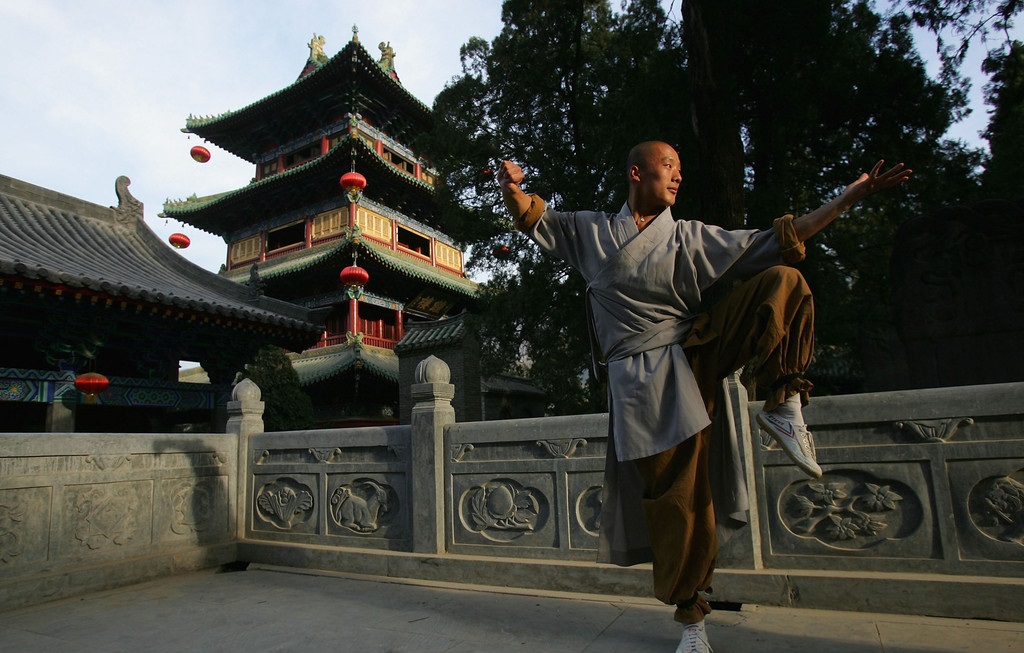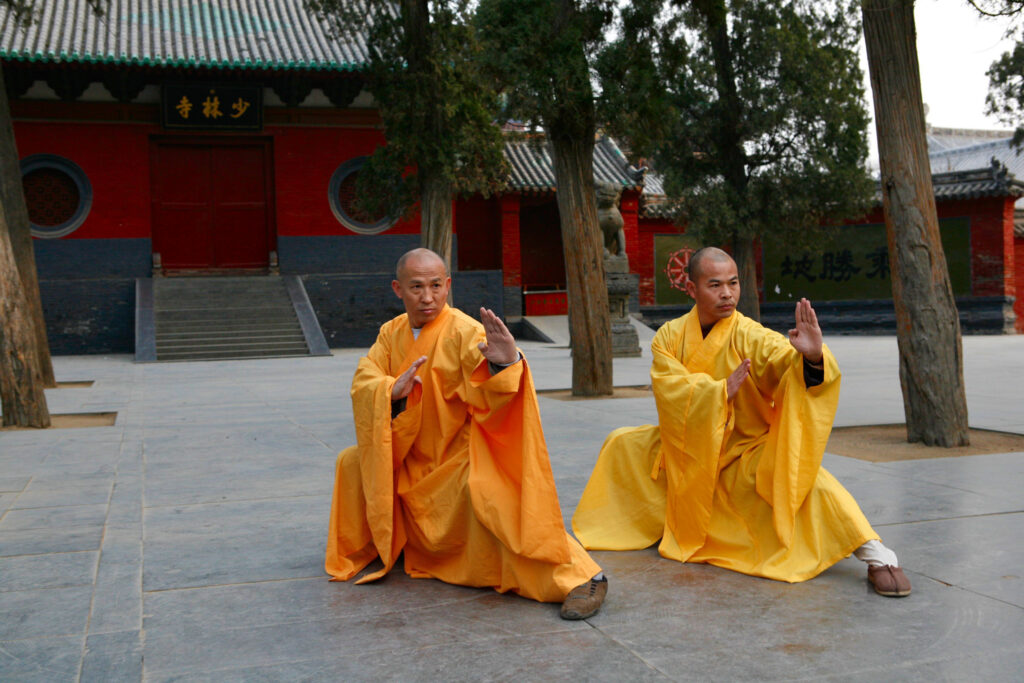Shaolin is the broadest system of traditional martial art in the world, based on the sheer volume & diversity of sub-systems & techniques it incorporates. Most traditional styles of kung fu that we know today, originate from the umbrella system of Shaolin, which broadly speaking can be described as a ‘hard style’ / ‘external’ art, although it does still incorporate some internal exercises (variants of Qigong).

History – the birth and destruction of the original monastery
Shaolin is an ancient school of Chinese Kung Fu that traces its roots back to the construction of the original Shaolin Temple on Mount Song in the Henan province of China over 1500 years ago (around 500 AD). For more than a thousand years to follow, Shaolin Kung Fu evolved until it reached its peak in both sophistication and number of followers nearly 400 years ago when the temple was destroyed.

Around 1650 AD, the Shaolin temple was the last remaining stronghold of the fallen Ming dynasty, and masses of parents were sending their children there to grow up as soldiers in support of the resistance against the new Qing dynasty that had been occupying China since 1644. After many unsuccessful attempts to destroy the Shaolin temple, it was eventually burnt down by a spy on the inside while Qing forces attacked simultaneously from the outside. Nearly all its disciples were slaughtered, but 5 grandmasters escaped and fled their separate ways to avoid capture.
The Qing dynasty officially ruled over China until 1912, and during that dynasty of nearly 300 years all practise of kung fu was outlawed so much of the skill of Shaolin was lost forever, but some still remains with the help of those who were secretly taught by the few survivors including many of lesser skill levels than the 5 elders.
The Chinese government to this day still actively stigmatises and penalises the teaching of high level kung fu to westerners, and they’ve rebuilt the Shaolin monastery to be little more than a glorified tourist attraction, so we should be cautious about expecting too much from the average Shaolin kung fu club today, and be cautious about assuming their levels are indicative of the heights achieved by the Shaolin 400 years ago.